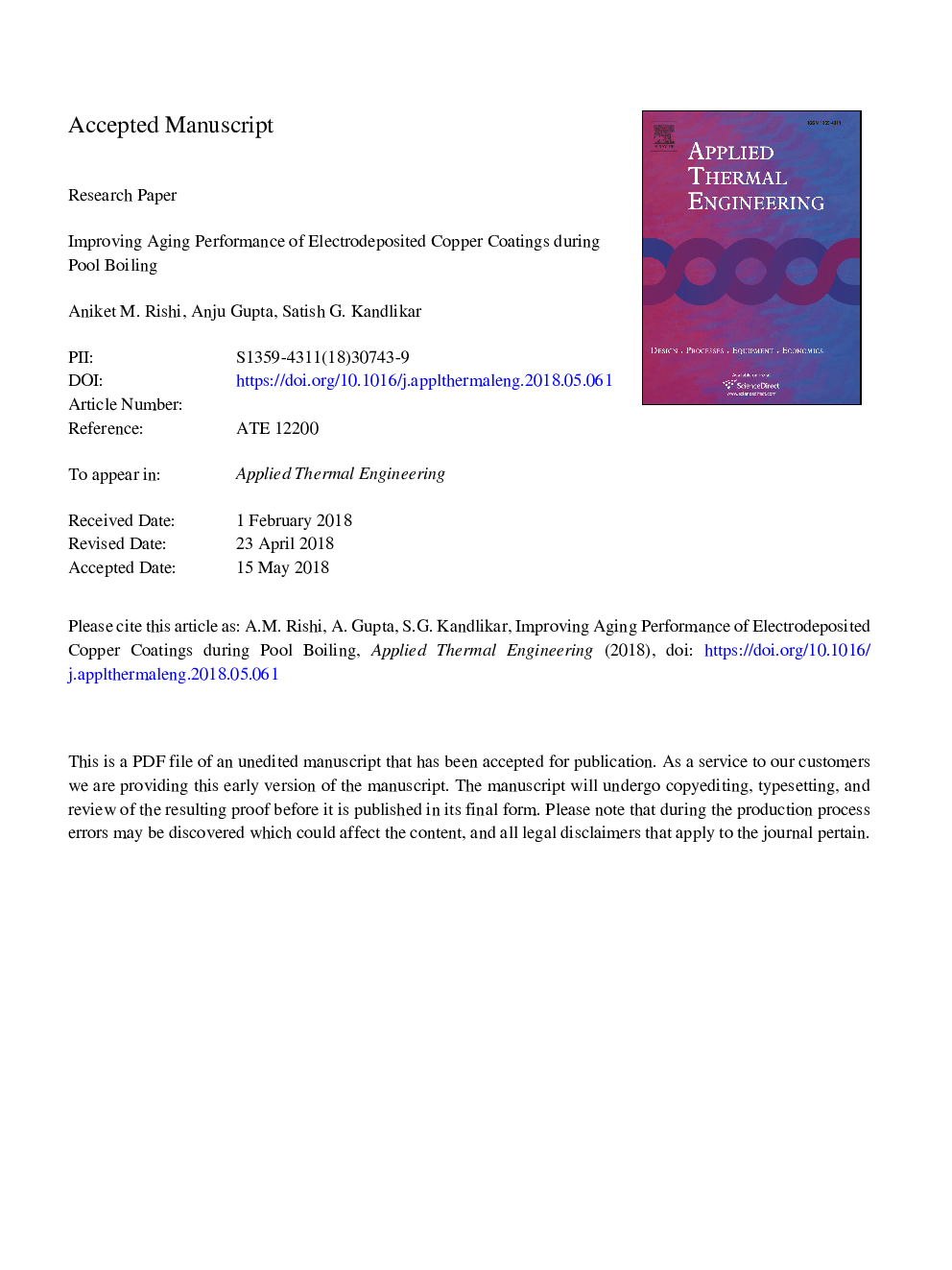| Article ID | Journal | Published Year | Pages | File Type |
|---|---|---|---|---|
| 7045076 | Applied Thermal Engineering | 2018 | 29 Pages |
Abstract
The work presented in this paper focuses on the pool boiling performance and durability of the porous copper surface coatings generated through a multi-step electrodeposition process with controlled process parameters. Despite the simplicity, reliability and cost effectiveness of the electrodeposition process, the resultant coatings have limited applications in industrial pool boiling equipment due to weak bond strength between the coatings and the substrate. A new multi-step electrodeposition technique is presented that involves repetitive coating steps with a high current density for a short duration (deposition mode) followed by a low current density for a longer duration (bond strengthening mode). It results in a stronger bond compared to the single-step or recent two-step electrodeposition techniques. This alternate deposition and bond-strengthening mode is responsible for the formation of sustainable coatings with hierarchical pores that serve as nucleation sites of widely varying pore diameters, and enhance the heat transfer coefficient (HTC) and critical heat flux (CHF) by increasing bubble activity in these connected pores. A six-step electrodeposited surface was chosen to validate the hypothesis by studying (i) repetitive pool boiling performance of boiling water at one atmospheric pressure, and (ii) surface deterioration of the coatings. Further refinements in the electrodeposition process parameters are recommended in future studies for long-term durability of electrodeposited coatings under pool boiling in commercial applications.
Related Topics
Physical Sciences and Engineering
Chemical Engineering
Fluid Flow and Transfer Processes
Authors
Aniket M. Rishi, Anju Gupta, Satish G. Kandlikar,
